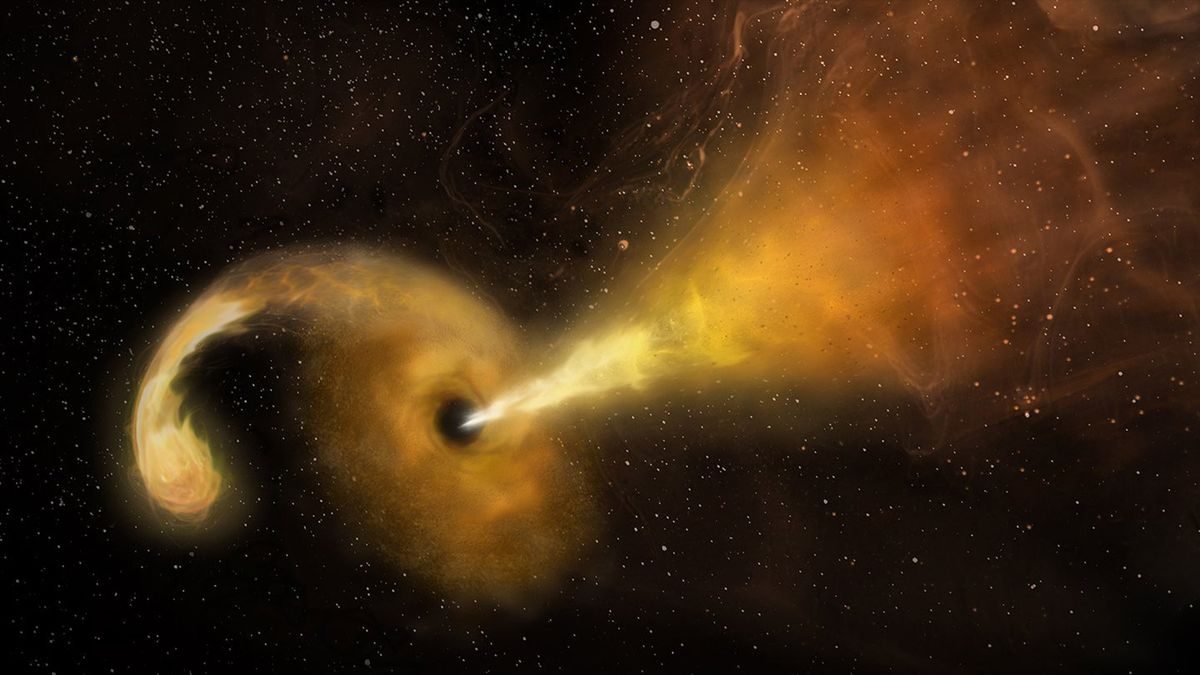Black holes keep 'burping up' stars they destroyed years earlier, and astronomers don't know why [View all]
By Robert Lea published about 8 hours ago
Years after ripping stars to shreds, 24 black holes suddenly flared up with radio waves in inexplicable 'burping' bouts. Half of all star-killing black holes may experience the same.

An illustration shows a tidal disruption event, a black hole ripping apart a star and devouring it. (Image credit: Sophia Dagnello, NRAO/AUI/NSF)
Up to half of the black holes that devour stars "burp up" their stellar remains years later.
Astronomers made the discovery after spending years watching black holes involved in tidal disruption events (TDEs).
TDEs occur when stars venture too close to black holes. These cosmic monsters' immense gravity exerts incredible tidal forces that stretch and squeeze the stars — a process called spaghettification. The unfortunate stars involved in TDEs are ripped apart or "unraveled" in a matter of hours, signaled by a powerful flash of electromagnetic radiation in visible light.
Some of the stellar material of the destroyed star is flung away from the black hole while the rest forms a thin frisbee-like structure around it called an accretion disk, which gradually feeds that material to the black hole. In its early days, the accretion disk is unstable, and matter sloshes around and smashes into itself, causing outflows detectable by radio waves. But astronomers traditionally only look at these star-eating black holes for a few months following the TDEs.
In the new research, however, astronomers watched black holes involved in TDEs for hundreds of days, finding that in up to 50% of the cases, the black holes "burped back" stellar matter years after the TDE.
https://www.livescience.com/space/black-holes/up-to-half-of-black-holes-that-rip-apart-stars-burp-back-up-stellar-remains-years-later
